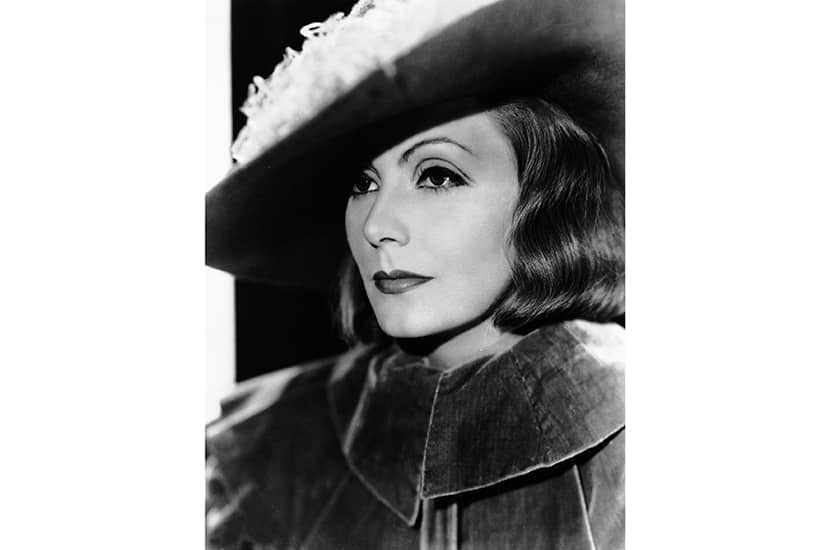‘We didn’t need dialogue’, glares Gloria Swanson’s crazed silent picture star midway through Billy Wilder’s Sunset Boulevard. ‘We had faces!’ She had a point. Even those of us who believe the movies weren’t really the movies until they had snappy dialogue (and no dialogue ever snapped the way Wilder’s did) have to concede that Swanson had a face that could stop a train. Still, she was an also-ran compared with Greta Garbo, who had a face that could start a religion. As her first champion, the Swedish filmmaker Mauritz Stiller, once said that Garbo’s mush would ‘make the gods happy’.
Her embonpoint was rather less empyreal. John Gilbert, her most frequent Hollywood co-star, wasn’t known for his insight — even if he’d had the voice, he hadn’t the wit to make the transition to sound — but he was surely right when he said that Garbo’s ‘bones are too large’. Despite the best efforts of lighting crews and wardrobe assistants, Garbo’s movies reveal a woman with a flat chest, no waist, thick ankles, big feet and, at least in her earliest days in Hollywood, what Robert Gottlieb calls a ‘riotous frizz’ of electroshocked hair. But Gottlieb is at least keen to stress in his fine new biographical study that there was no truth to the suggestion that the young Greta’s gob was a mess. In fact he says she had ‘the only perfect teeth of all MGM’s stars’.
She also had what Gilbert called ‘amazing eyes’ — large, dark, deep-set and fathomless. Alas for Gilbert, he did what legions of cinema worshippers only dreamed of doing and dived right in. To be fair, Garbo did kind of fancy him too. Still, she would always turn down his offers of marriage. It’s not me you’re after, she would tell him: ‘You are in love with Garbo.’ Even though Gilbert was happy to admit this, he couldn’t see that it invalidated his ardour. Garbo, on the other hand, seems always to have been alive to the gap between reverie and reality down which many a star has fallen.
Biographers too. Gottlieb’s is only the latest book on Garbo to skirt around the question of her sexuality. Oh yes, he confides, we know Garbo loved cross-dressing just as much off screen as on it. Like many commentators before him, he makes sport of her declaration as the titular character of Queen Christina that ‘I shall die a bachelor’. Indeed he goes one better, spotting that as the heroine of Mata Hari Garbo declares: ‘I am my own master.’
And in a way she was. Long before the studio system broke down she was calling the shots over what movies she would and wouldn’t make. On the other hand, none of her own ideas ever got off the ground. She had always wanted, she said, to play Hamlet and Dorian Gray, and though it is not difficult to imagine her pulling off those roles, her principal boy fantasies never came to anything.
The same went for her private life. Though she did indeed remain a bachelor, there is no proof that she ever actually swung the other way. Gottlieb, who for all his wisdom is perhaps a little too in love with his subject, tells us that the Manhattan apartment to which the 36-year-old Garbo retired in 1941 was decorated in pink, pink and more pink. But his passion prevents him from grasping the essential truth about Garbo — that she was at least bi-curious. Like all the great stars (isn’t there something mincing about even John Wayne’s walk?), she appealed as much to her own sex as she did to the other lot.
That said, the astonishing thing about Garbo is how bad even her best pictures are. She made fewer good films than any other major player — and none, save the Wilder-scripted Ninotchka, that would detain us were she not in them. But even if you’ve never been smitten by her, Garbo might turn you on. Gottlieb wasa publisher before he was a writer, and this elegantly designed book, printed on gorgeous paper and brimming with sumptuous silvery images, is almost as seductive as its subject.
Almost. In a justly famous Sight and Sound essay which Gottlieb reprints in full, Kenneth Tynan alerted us to the way Garbo’s love scenes invariably show her ‘flinging her head flexibly back at right angles to her spine’, the better to be devoured by her swain. Would that Garbo were a tenth as pliable. Here is a book that demands to be opened flat, to feast on all those glorious duotones. Try it, though, and its spine will crack like John Gilbert’s voice.






Comments